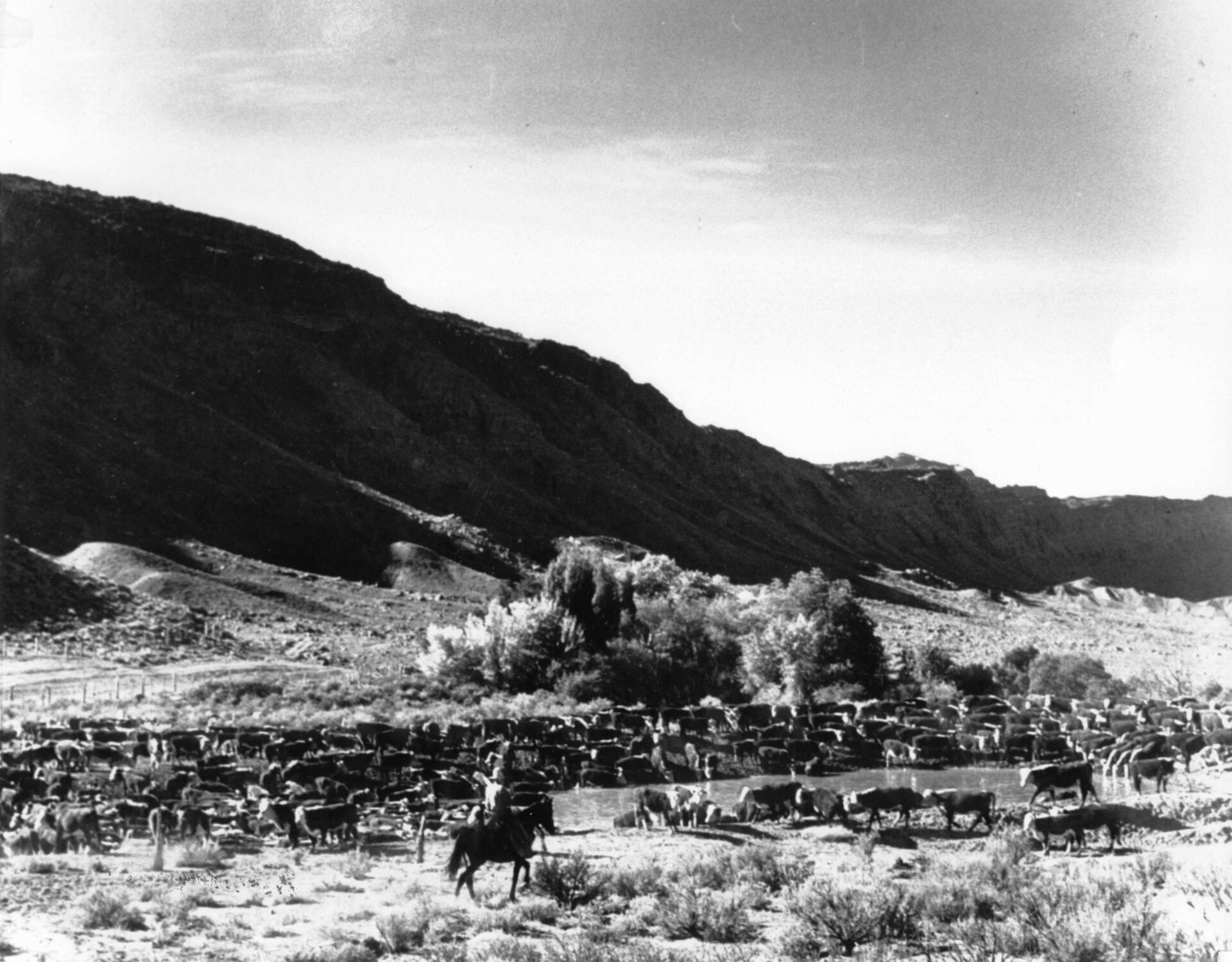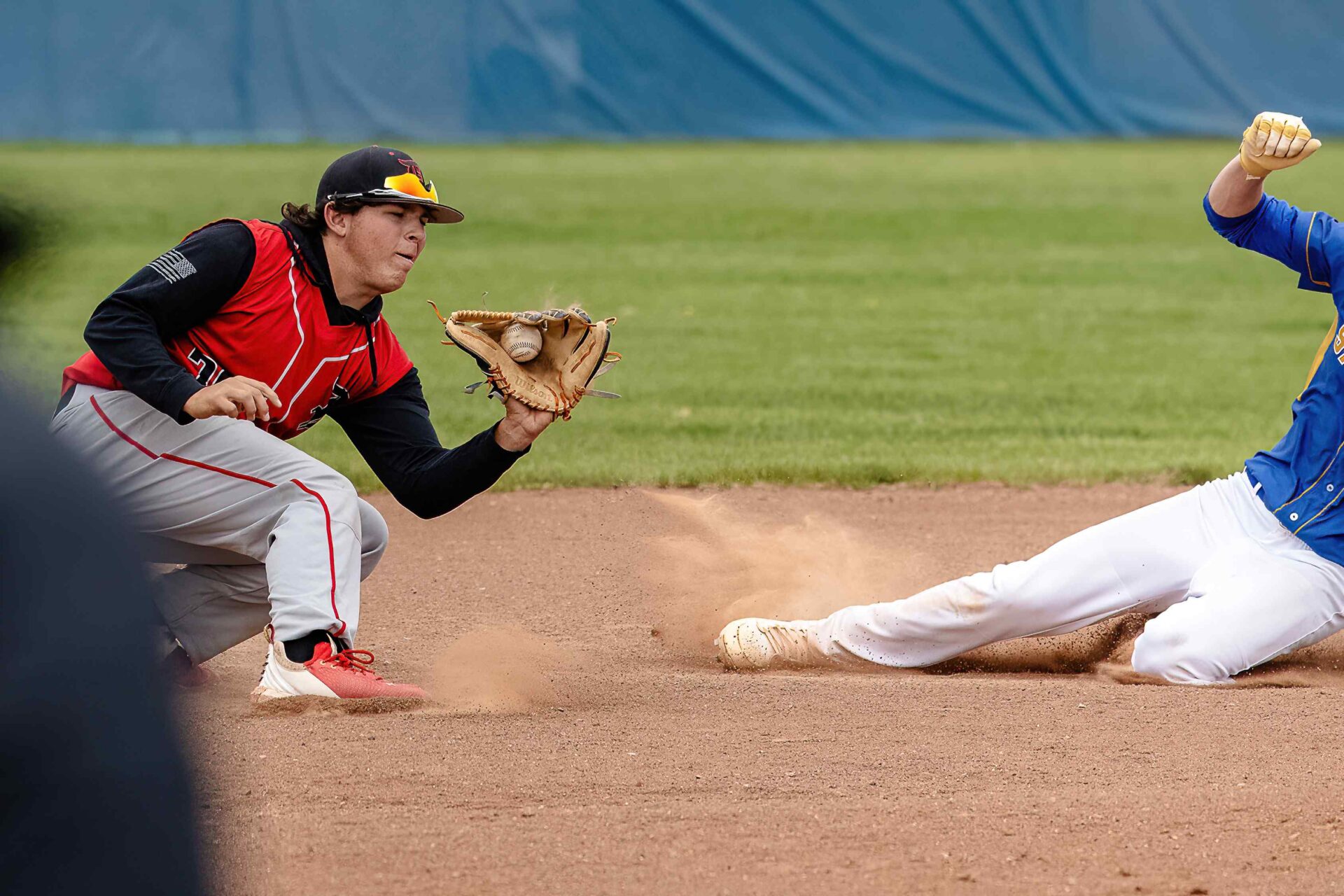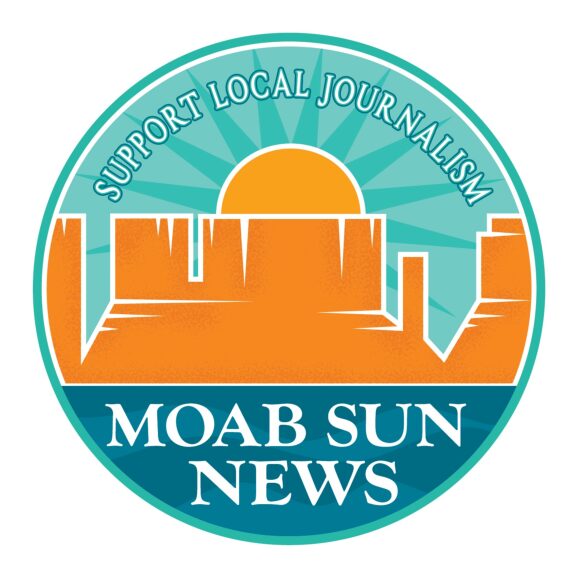
Bates Wilson was a National Park Service employee in the early 1930s—by 1937, he had become the Acting Superintendent of Organ Pipe Cactus National Monument, and in 1949, the park service transferred him to Arches National Park and Natural Bridges National Monument. Wilson spent his time split between the two regions, mapping the nearly boundless geography of Southeast Utah. As he got to know the area, he advocated for the creation of what was to become Canyonlands National Park.
Throughout his tenure, Wilson hosted a number of government officials in Southeast Utah, visits which he saw and utilized as opportunities to lobby for the preservation of public lands. At a dinner in 1961, Wilson hosted Secretary of the Interior Stewart Udall and presented him with an official proposal for Canyonlands.
In an oral history recorded by the National Park Service, Bates’ son Tug Wilson recounted, “Udall wanted to go on vacation and was told there was some ranger in southern Utah who wanted to make the whole state a national park.”

Bates Wilson ultimately became successful in his lobbying efforts a few years later on September 12, 1964, when President Lyndon B. Johnson signed into law the establishment of Canyonlands National Park. Wilson was named the first acting superintendent of the park. His lobbying strategy was to chat over a hot meal, often cooked in his 20.5-inch Greenfield Products cast iron skillet—this became fondly known as “Dutch Oven-Diplomacy.”
Through his work in the preservation of 250,000 acres of spectacular landscape, Wilson earned the moniker “Father of Canyonlands,” and added momentum to the growing tourism industry. The park is now the largest of the five in the state of Utah, totaling 337,258 acres.
Wilson retired from the NPS in 1972, but remained close to Canyonlands. He maintained a ranch in Professor Valley, just 20 miles north of Moab, and served as chairman of Canyonlands Natural History Association until his death in 1983.
Bates’ backcountry skillet in the Museum Collection
The “Big Daddy 20.5 inch” skillet was manufactured by Greenfield Products and personalized with “BATES” stamp-engraved at the end of the handle. The skillet’s handle is riveted with a heavy 14-gauge steel bronze plate that reads “Greenfield Products 827 No Fourth St Greenfield, Ohio.” The Collections record cites that the handle is not removable as in later models.
Pam DeVore, along with her husband Ken DeVore, were friends of Wilson’s and acquired the pan in an auction after Wilson’s death, allegedly outbidding the U.S. National Park Service. DeVore recalls that Bates would cook giant scrambled egg breakfasts in the skillet at camp over an open fire. DeVore gifted the skillet to the Moab Museum in July 2022.
The Moab Museum is dedicated to sharing stories of the natural and human history of the Moab area. Learn more about Bates Wilson and hear part of his story in his own words in Wilson’s profile on the Museum’s website and inquire about Tug Wilson’s oral history to read the full interview. To explore more of Moab’s stories and artifacts, find out about upcoming programs, and become a Member, visit www.moabmuseum.org.



